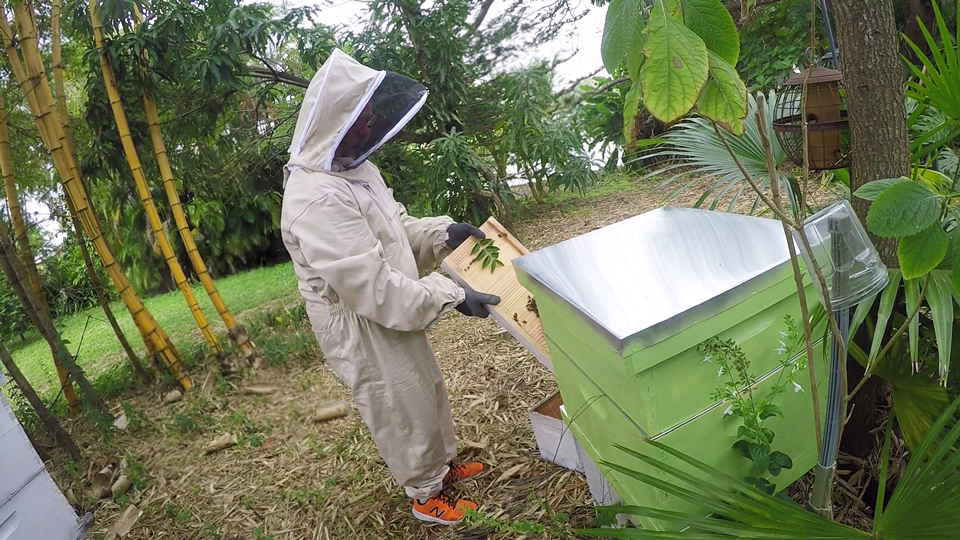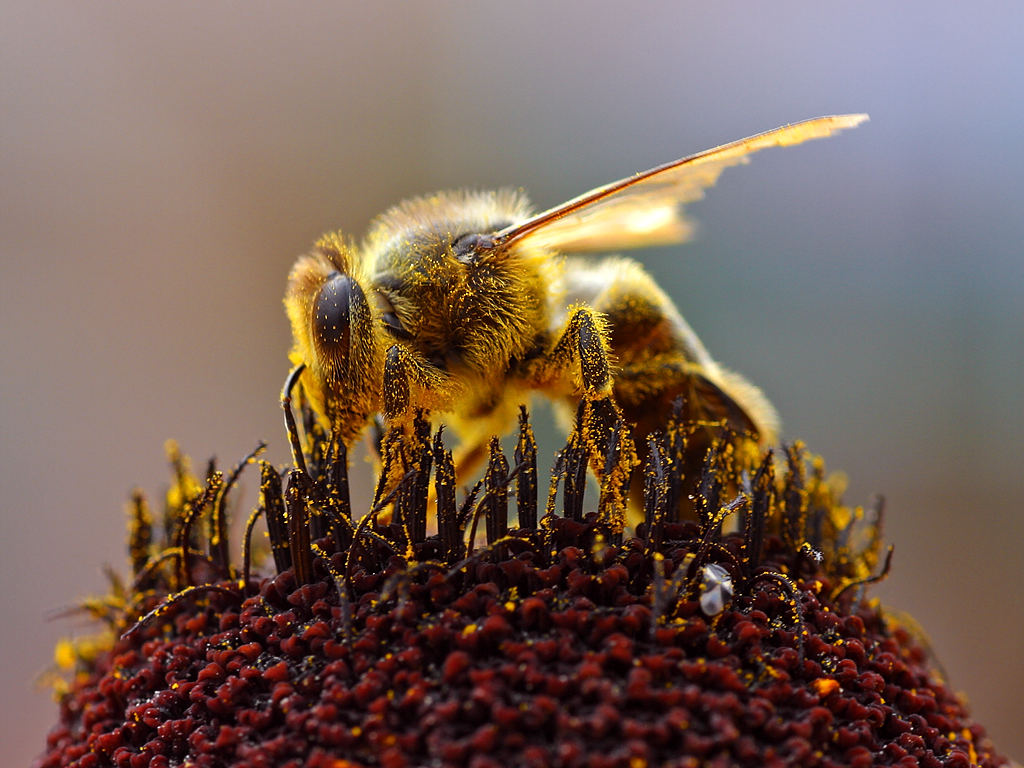CARLISLE, Penn. – Bees have long enjoyed attention by Pagans and Witches. The Witch in the Wood blog noted last year that, “Witches have enjoyed a long and enchanting relationship with the bee, sharing many rituals, as well as other magickal traits that they have in common.”
The Wild Hunt has covered the bees many times, including how bees were rescued during the Australian wildfires. (The author is a beekeeper.) New data, however, is exposing the scope of the threat to honeybees.
Research published this week in Scientific Reports suggests that farmland is becoming more dangerous to honeybees (apis mellifera). The research examined pesticide use in the United States farmland and found that insecticides used today are more toxic to honeybees than insecticides used 20 years ago.
Earlier studies had identified the increased toxicity of pesticides to honeybees. Previous research had identified that the toxic load of pesticides had become four times more deadly by contact and 48-fold more deadly by ingestion. The current research suggests that toxicity has increased even more, with some pesticides being 121-times more toxic to honeybees than they were in 1997. Oral loads exhibited the highest increase in toxicity.
The greatest increases were observed in the U.S. Heartland and the Northern Great Plains, roughly from Ohio to South Dakota, and then south along the Mississippi River with pockets of increased toxicity also observed in central Florida. The researchers note that increases in the Midwest likely reflect the increased cultivation of corn and soybean in those areas.
Although pesticide application rates were found to have decreased by about 64% over the same time period as the increase in toxicity, the intensity of the substances increased by 16-fold between 1997 and 2012.
Similar research conducted in Great Britain found that pesticides had become six times more toxic to honeybees across a similar time span.
The current study specifically notes that an “increase in insecticide potency was associated with the shifting composition of insecticide classes, away from organophosphates and toward pyrethroids and neonicotinoids.” The researchers underscore that neonicotinoids accounted for 98% of the oral toxic dose to honeybees.
Neonicotinoids (often called neonics) are a class of neurologically active insecticides that are similar to nicotine. Previous research has suggested that neonicotinoids are less toxic to birds and mammals than other pesticides like organophosphates.
Despite those findings, neonicotinoids have been identified as having significant and adverse ecological effects. They have been implicated in honeybee colony collapse disorder, whereby worker bees disappear, leaving behind insufficient mature bees to attend to the queen and brood. Ultimately, the colony fails.
The effect may occur because of the cumulative introduction of the pesticides from nectar that is ultimately concentrated as honey reserves that are consumed by bees over the winter.
Neonicotinoids have also been implicated in the loss of bird populations through the indirect elimination of insect populations that serve as food.

TWH’s editor-in-chief, Manny Tejeda-Moreno, in ritual garb [S. Ciotti]
In 2013, the European Union restricted the use of neonicotinoids followed by an outright ban in 2018 of three neonicotinoids for all outdoor use.
In Canada, Montreal banned the use of these pesticides within its city limits in December of 2015 following Vancouver’s similar ban some two years earlier. The Province of Ontario has regulations limiting neonicotinoids use, but still treats the majority of its soybean production with them.
In 2014, the U.S. banned neonicotinoid use on National Wildlife Refuges, but the decision was reversed by the Trump administration in 2018, noting that the use of such substances would be made on a case-by-case basis. In May of 2019, as part of a legal settlement, the U.S. Environmental Protection Agency revoked the approval of two neonicotinoids, but has also expanded their use, claiming that the pesticide is safer than many other alternatives.
While honeybees have been highlighted because of their economic and cultural significance, the use of neonicotinoids affects other pollinators.
Dr. Christina Grozinger, distinguished professor of entomology and director of the Center for Pollinator Research at Pennsylvania State University, noted in a statement that “insecticides are important for managing insects that damage crops, but they can also affect other insect species, such as bees and other pollinators, in the surrounding landscape.” She added, “It is problematic that there is such a dramatic increase in the total insecticide toxicity at a time when there is also so much concern about declines in populations of pollinating insects, which also play a very critical role in agricultural production.”
Neonicotinoids are often used as part of seed treatment. “Several studies have shown that these seed treatments have negligible benefits for most crops in most regions.” Grozinger added. “Unfortunately, growers often don’t have the option to purchase seeds without these treatments; they don’t have choices in how to manage their crops.”

Bee collecting pollen [Jon Sullivan, public domain]
The study’s authors point out some important limitations in their findings related to the seed treatment issue. They note, for example, that some states like California do not collect much data on seed treatments.
The researchers added that while the study focuses on honeybees, pesticide use contributes to declines not only in pollinators, but in other populations such as the monarch butterfly.
The Wild Hunt is not responsible for links to external content.
To join a conversation on this post:
Visit our The Wild Hunt subreddit! Point your favorite browser to https://www.reddit.com/r/The_Wild_Hunt_News/, then click “JOIN”. Make sure to click the bell, too, to be notified of new articles posted to our subreddit.
